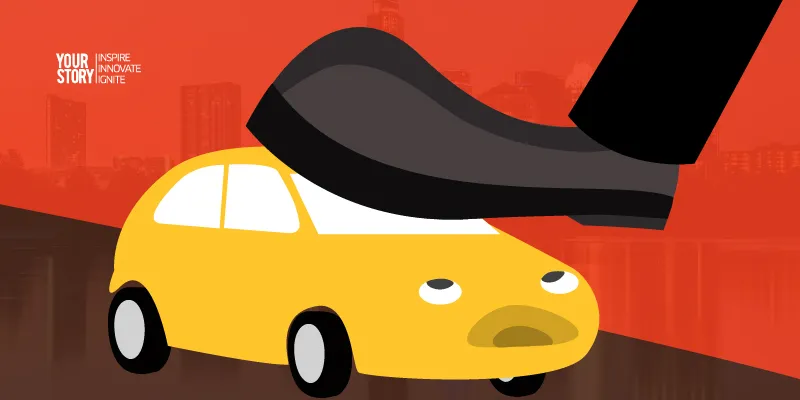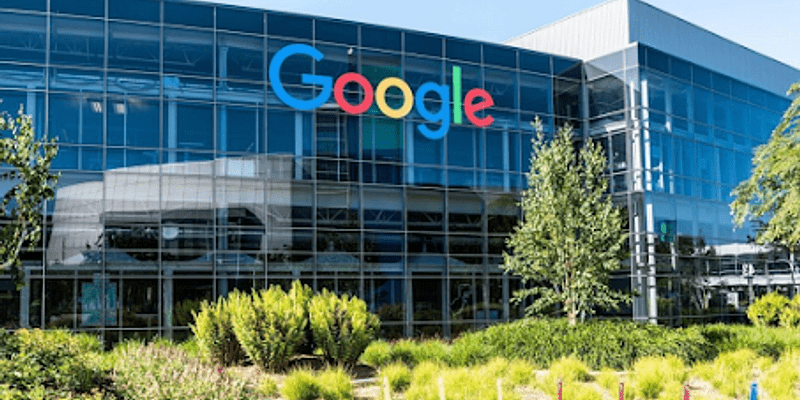Why Ola and Uber are in trouble, while Meru goes scot-free
Athira Nair

Tuesday June 14, 2016 , 7 min Read
Twenty-five-year-old Roopali Srivastava had just finished a job interview at a financial consultancy firm. Living in Jayanagar, heading to Bellandur, was a task in itself. A few years back, this would have been a concern but now, thanks to cab aggregators like Uber and Ola, the distance wasn’t a concern.
However, over the past few weeks, the cab aggregators’ situation has been anything but smooth. Legal battles have made operations of both Ola and Uber sketchy and difficult. From drivers striking to vehicles being impounded to fight against surge pricing to license applications being rejected, the legal warfare keeps taking ugly turns.
But while Ola and Uber are fighting to find their footing, Meru seems to be sailing smooth away from the government radar.

The legal play
As of April this year, aggregators are required to obtain aggregator licenses. Meru has already received its license and though Ola and Uber have applied for their licenses, Uber’s application was rejected. Meru has 1200 cars under the aggregator model.
Ola’s application for state permit is still under consideration. The Transport Commissioner wants all their vehicles to be inspected again, especially for the panic button,” says HG Kumar, Additional Commissioner, Transport Department.
Explaining the discrepancy, Kumar says, “Any operator with less than 100 vehicles can operate under the city taxi permit scheme of 1988. Aggregator scheme has been formed only for those with more than 100. Meru operates under the city taxi permit scheme (for cars they own).”
Eight companies fall under this scheme, including Meru, EasyCabs, and Fast Track.
The city permit is for black and yellow taxis in metros, radio taxi permit for Meru, and FastTrack; and tourist taxi permit for Meru, Ola, and Uber.
However, the 1998 scheme was written before the formation of the Bangalore International Airport and now the scope of transport has widened. Kumar says that those who are landing at the international airport might be going to Tumkur, Hosur, Anantpur, Mysore, or even neighbouring states. About 30 percent people go to places other than Bengaluru. Hence, the city taxi permit fares are kept intact.
The licensing fight
There are 3,500 city taxi permit holders in Bengaluru. All the other permits are issued under the State Permit for the State of Karnataka. Kumar says that Ola and Uber are operating under the State Permit and need to follow the city taxi fares.
Bhavik Rathod, General Manager, Uber Bengaluru, has a different take. He says that their suggestions have not been taken into account and the recent regulations are much the same as those in 1998 for the radio-taxi industry.
We have submitted our petition on some of the clauses in the regulation that we believe to be regressive and our suggestions on how they can be better for tech businesses like ours,” says Bhavik.
For instance, the law demands digital printer in the cab to print a receipt of the ride. Bhavik says that this compulsion is questionable as mobile apps can calculate fares.
The regulations mandate the vehicles on aggregators’ platforms to have a taxi sign on top of the cars. “The whole reason for taxi signs was that they enable street hailing, but this concept doesn’t hold true for the likes of us; it is e-hailing and everything happens on the app,” says Bhavik.
Ola refused to participate in this story.
Regulations for public good
Siddhartha Pahwa, CEO of Meru Cabs, however, believes that all the regulations have been put in place keeping the interest of the consumer in mind. Experts believe that compliances to a public service badge, which follows training in road behaviour, customer interaction, and traffic sense, is important.
Siddharth is open to the idea of adding a taxi sign on the cars. He says that consumers should have the right to be able to get cab services via an app, over phone, and on the road.
Many Ola and Uber drivers do not have this service badge. Public service badge is issued by the RTO, after checking if the driver knows the topographical features of the city, whether they can converse in the local language, and has passed eighth standard in school. A test is conducted, after which the badge is issued, along with a driver license for those who did not already have one. All drivers of passenger transport vehicles should have this badge.
Besides decent driver behaviour, a fare structure has also been mandated. The MRP cannot be breached.
Creating artificial scarcity
The main reason given by the aggregators for surge pricing is more demand.
However, Jaspal Singh, Partner at Valoriser Consultants, believes that the drivers may be playing the system. He adds that drivers concentrate in one location, switch off their app, and create artificial scarcity. They use the second phones to keep track on the rising prices. Once the surge begins, they log back again.
He explains,
The companies cannot stop it; they can’t monitor it real time. So you can’t keep it open for these companies to decide their rules. Besides, none of these companies give driver training. Anybody can register as a driver. Many of them have no traffic sense. Even with GPS, you should know the roads well. These companies give only training on how to use the app; but not on the roads or behaviour.
While Meru follows the mandated MRP structure, they believe that the Rs19.50 and 25 percent night charge is tight band. They are looking at a maximum price band at Rs25 to 27 and will maintain the price across that, so that it allows supply during peak hours. They also believe the age of the car can be increased, based on the maintenance and quality.
Meru, however, has always been on the good side of the law- They got CNG vehicles, driver badges, and fare meters as decided by the government. Because of the meters, there was no option to play with the fare.
The numbers game
Many players like Magic Sewa believe that Ola and Uber follow strong predatory pricing methods. Rakesh Agarwal, Founder and CEO of Magic Sewa, says that both the aggregators pay close to Rs 60,000 to the drivers in incentives. Thus if it is Rs. 6 per km from the passenger, it translates to Rs25 for the driver.
This, Rakesh adds, is in violation of Section 4 of Competition Act of 2002 and Section 67 of Indian Motor Vehicle Act. The former states that a company which is in a dominant position in a particular market cannot indulge in ‘predatory pricing’ which is defined as selling below costs. “We are fighting for survival due to their illegal tactics,” he says.
Better business model
While different players and stake holders believe that cab aggregators are against any form of regulations, Uber believes otherwise. Bhavik says that regulations are a sign that the industry is being recognised. However, it is important that these regulations be progressive and not regressive.
He added that the driver partners, whose cars have been impounded and livelihoods have been affected, have moved to the court of law filing a petition. The drivers ask ‘why are our livelihoods and cars being impounded with the regulatory battle that has been going on’.
While there are different theories and takes of whether Ola and Uber are legal or not, the kind of growth the cab aggregators have seen is exponential. Jaspal says that this growth wouldn’t have been possible in Meru’s model. “A lot of drivers have, in fact, shifted to the aggregator models due to incentives, hurting Meru which was the one which created the supply,” he says.
Meru faced a decline in the last few years, but yet never bothered with advertising or promotional campaigns, whereas the aggregators went out of their way to do so.
Mobility is a major sector, and investors believed that sooner or later the cab aggregator service is going to become part of everyday life. “Policy makers in India are not fully aware of the market conditions. They are not taxi experts. In the US, Europe or Canada, they hire experts who know the sector and regulations. Here, they have no broad views – they just know how to deal with the regulations and get the licenses,” adds Jaspal.
The reason the sector gets so much attention is because of the money flowing in. Uber recently raised $3.5 billion funding. And yet, they (Uber and Ola) only complement and not replace the existing public transport system.







![[Funding alert] Alternative credit platform BlackSoil raises Rs 32Cr via NCDs](https://images.yourstory.com/cs/2/3fb20ae02dc911e9af58c17e6cc3d915/Ankurimage-1600856808384.jpeg)


